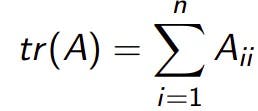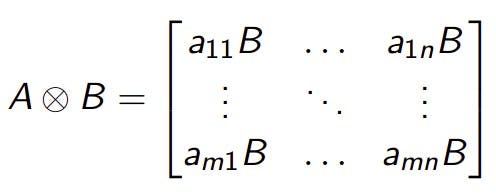Vector Space: We define vector space as a set of all elements that are closed under vector addition and scalar multiplication operations. (closed means that after some operation on vector you will again get vector)
Norm: Norm is a function that takes vector and returns non-negative number. It satisfies following properties:
- Positivity: ||x|| >= 0
- Definiteness: ||x|| = 0 if and only if x = 0
- Absolutely homogenous: ||alpha . x|| |alpha|||x||
- Triangle inequality: ||x+y|| <= ||x|| + ||y||
L2 or Euclidean norm:

L1 or Manhattan norm:

Infinity norm:

P-norm:

Inner Product: Inner product is a function that takes two vectors from vector space and returns a real number. Functions need to satisfy following properties:
- Positivity: >= 0
- Definiteness: = 0 if and only if x = 0
- Additivity: = + < y,z>
- Homogeneity: = lambda
- Symmetry: =
Inner product and norm can be related to each other as follows: ||x|| = sqrt()
Linear Independence Given vectors v1, v2, ….. vn are said to be linearly independent if no vector can be written as a linear combination of other vectors. We can form a vector space V from a given set of vectors by taking linear combinations.
Span All linear combinations of elements
Basis A set B of vectors in a vector space V is called a basis if every element of V may be written in a unique way as a finite linear combination of elements of B. (In short it is Linear independence + Span)
Dimension Cardinality of basis
Matrix multiplication is
- Not commutative
- associative (AB)C = A(BC)
- Distributive A(B+C) = AB + AC
Transpose of a Matrix
B = AT
Bij = Aij
- (AT)T = A
- (A+B)T = AT + BT
- (AB)T = BTAT
Trace of a matrix

Properties:
- tr(A) = tr(AT
- tr(A+B) = tr(A) + tr(B)
- tr(AB) = tr(BA)
Inverse of a square matrix AA-1 = A-1 A = I
Properties:
- (A-1)-1 = A
- (AB)-1 = B-1A-1
- (A-1)T = (AT)-1
Row rank and Column rank
- Size of the largest subset of rows/ columns of A that constitute a linearly independent set.
- Row rank = Column rank
Properties:
- rank(A) = rank(AT
- rank(A+B) <= rank(A) + rank(B)
- rank(AB) <= min(rank(A), rank(B))
Inverse doesn’t exist when A is not full rank.
Range is the span of columns of A Nullspace is the the set of vectors when multiplied by A give a zero vector. Orthonormal matrix** Columns are orthogonal to one another and each column is normalized. UTU = I = UUT
- Symmetric Matrix, A = AT
- Anti-Symmetric Matrix, A = -AT
- Frobenius Norm:

- Kronecker product

Eigen Values and Eigen Vectors A non zero vector x is called eigen vector if it satisfies: Ax = \(\lambda\)x , where \(\lambda\) is called eigenvalue of matrix A.
Properties:
- tr(A) = \(\sum_{i=1}^{n} \lambda_i\)
- det(A) = \(\prod_{i=1}^{n} \lambda_i\)

